Why Steemit is the most important leap in 1,000 years
Hello, STEEM World!
 Why Steemit is the most important leap in 1,000 years
Why Steemit is the most important leap in 1,000 years
Where I begin
Banks, the IRS, insurance companies, and the like list me as Joseph H, but friends and family call me Howard. Along the way I have learned to answer to almost anything said in a friendly tone. My maternal grandmother drew out my name as Hi-i-red. And for a very long time, my first mother-in-law thought I was Harold.
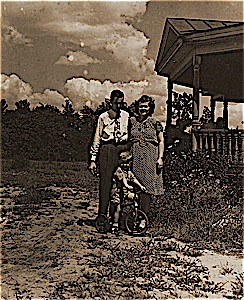 |
| The Joneses, 1946, at my birthplace |
I raise these recollections because, all along, I have wondered about names. Not only the so-called proper ones of people, places or pets, but common names, too. The ones that refer to things, situations and scenes all around us.
What we call an entity, actual or not, in a way, confers a kind of magic. It implies that we have an influence over it. As if it depends on our recognition. Ancient peoples were reluctant to invoke names of great powers. They feared payback for not exhibiting sufficient awe, for being presumptuous, or too familiar. Punishment could be awful. Hence the taboo in many cultures against saying aloud the name of their god.
 |
| The Art of Naming Facts |
Even today, using a name seems to condition the kind of experience to expect. Sometimes it confers great relief. A diagnosis can comfort just by identifying a mysterious malady. It implies that the doctor is in charge.
Where a pose by any other name is just more spin
But inappropriate or erroneous interpretation invites further complication and trouble. Organic systems, whether living bodies or societies, do not long tolerate dysfunction. They either heal or they get worse and die.
For instance, common crimes that are said to be so-called “acts-of-terror” confuse a situation. They dismay and excite general anxiety. Further, such misnomers wastefully misapply both public and private resources and misdirect community diligence.
Social turmoil or bodily disease continues until touted facts recognize the actual particulars of conflict. Call it like it is. A cure, whether of some malady or of social dysfunction, depends upon an ability to respond to facts appropriately. Harmony is denied for so long as true factors and motivations go unrecognized.
Shakespeare asks, “What’s in a name?” He knew as well as anyone that it is the root and emblem of identity and of character. A name is a cognitive handle for engaging ideas, people and entities we need to talk or think about.
But names also have metaphorical implications. Lawyers, ad men, public relations consultants and news editors all know that well-chosen sounds of names can evoke all sorts of shaded meanings. And linking those to other topics that are hot or notorious introduces shifts of emphasis that can help evade inconvenient truths. They call it spin, or pose. Such purpose-crafted names enliven imaginings among listeners and readers, whatever the actual facts.
Finding an apt name for a pose is the defensible part of the art of rhetoric, of eliciting persuasive emotion. It at least keeps a toe in the waters of truth.
In my early years, I was most bewitched by corporate advertising spins that glamorized scientific and technological "progress" as a sure road to happiness and prosperity. But tech, in itself, is emotionally neutral. And prosperity at the expense of general well-being is a sham. I now know that while science best accounts for actual experience, by no means does it have a lock on the whole of reality, which includes the actual, plus a whole lot of virtual symbolics, ranging from spin and pose to abstruse metaphysical notions.
Where the pose gives way to street smarts
I first entered university at UNC Chapel Hill. There I began in chemistry, physics and mathematics. To me, at the time, those subjects offered the most direct avenue toward the center of “what is real”. Thanks, Mr. Wizard! (A TV influence of my early years.)
 |
| Mr. Wizard on TV |
But I soon recognized the scant preparation for empirical science given in my own rural public schooling. That, plus a rambling curiosity and imaginal temperament urged me toward other pursuits, such as exploring the delights of beer.
Vexed in my first career path, I managed also to foul up my own social life. During a period of excessively sophomoric partying, a naive clumsiness in matters of the heart combined to render me a total and complete fool. Flustered and at a loss, at the age of nineteen I dropped out.
Into a cruelly dismissive letter to my parents, I projected all my discontents. I mailed the letter as I left, along with another disaffected student, to hitchhike to New Orleans. Without forethought for consequences, we both decided to test our fortunes, far from the familiar.
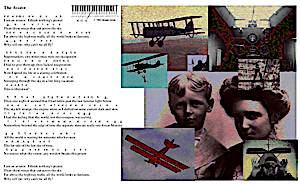 |
| An illuminated lyric sheet for one of my songs, printed long after it was written, from Suite: Snake Songs, The Aviator |
In New Orleans I lived on the streets, among other dispirited and homeless souls. From the famous school of hard knocks, I came to gather a more focused appreciation of life's actual options.
Playing guitar and singing folk songs, as well as working up a few of my own, I busked a scant living. But after a while I fell ill and had to choose between returning home to “eat crow” or lapsing into death. Given the bleak alternative, the dish of crow won out.
Where second chances try harder
To my great astonishment, my family welcomed me back. There was much love and little remonstrance. Immobilized by rheumatic heart disease, I grappled with a heightened sense of the actual as I pondered recent experiences. I had not yet encountered Ernst Cassirer's maxim that the task of the individual is to make sense of the senses, but already I glimpsed its crucial truth. Thanks, New Orleans!
Through forbearance of my parents, my schooling soon resumed. This time I chose the Art Department of East Carolina University. There I found my actual interests converged in study and exercise of graphic media.
Later, at Auburn University, I earned a terminal degree in graphics. I helped adapt multi-metal lithography to the fine arts studio and learned a lot about intricacies of both stone and multi-metal printing. Both immeasurably heightened my proficiency in both making and printing images. But, more importantly, while writing my MFA thesis, I came to appreciate the mutual relevance of ideas championed by Carl Jung and Ernst Cassirer. They proved congenial and stimulating guides toward relating creative thinking to other dimensions of sociocultural life. In the writings of both men, a free spirit of elaboration and discovery is at play. It ranges from art through cosmology to zoology.
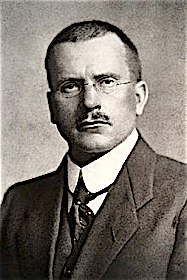 | 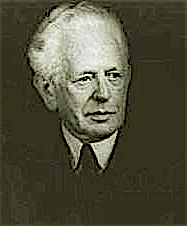 |
| Carl Jung | Ernst Cassirer |
A brief stint teaching at a small state school in North Carolina followed. Then a couple years later, I got an opportunity to set up and run a new graphics program. The Department of Fine Arts had debuted at the then still young University of New Orleans. Ah, the irony!
My first efforts there launched its print media program. A decade, or so, later, grant awards enabled further extension of the graphics curriculum into digital media. Also, in tandem, for about ten years, I was a founding principal of an industrial media company. There, I was able to exercise a lot of hunches about implications of digital media, tested by constraints of actual production for institutional use. Those explicit boundaries shaped efforts to translate and embody pragmatic sets of data structured for human cognition. We designed and delivered networked digital media for a variety of industrial, commercial and government entities.
Where glimmers digital dawn, there bode changing times
Early on, I saw that regarding digital computers as calculating devices misconstrues them. It ignores their even more radical potentials: communications and facilitation of sociocultural interchange.
 |
| 1940's Vintage Analog Computer Installation |
Earlier, during my first undergraduate days at UNC, on the way to math class, I usually took a shortcut that passed a glassed-in basement area. There, a hulking analog computer, legacy of World War II, blinked lights and spooled reels of magnetic tape. It piqued my curiosity. As in a hive, graduate students and a few faculty busily ministered to sprawled components of the machine.
I would pause to watch for long periods and often arrived late to math class. How do such investigations compare to my floundering empirical studies, I mused. But at the time there was no computer program to ask about. So I moved on and found my way into graphic art.
 |
| Altair 8800 microcomputer in Popular Electronics |
Years later, in New Orleans, I saw the January 1975, cover of Popular Electronics magazine; it featured a computer kit, the Altair 8800.
That compact marvel would prove to be harbinger of so much cultural dislocation and revision provoked by the burgeoning enterprise of computing. And it signaled a shift in my own concerns, as well. The article almost led me to get one, to see what it could do. But I had my hands full just getting the UNO Fine Arts Graphics program going.
Then, in 1976, on a particularly hot and muggy day, I was smeared, at least to my elbows, in printing ink and drenched all over in sweat. Such a day is ideal for stone lithographs, which need to be kept moist during printing, but it can be hard on the printer. My back ached from leaning across a large press bed to work heavy inking rollers.
Where it takes a lazy man to find an easier way
I was producing an edition of prints in anticipation of forthcoming exhibitions. Exhausted and drained by the humid heat, I stood up, put the roller back on its stand and thought for a moment, “There has to be a better way.”
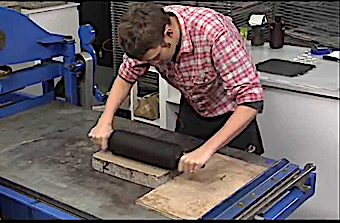 |
| Inking an imaged lithographic stone |
I recalled the analog computer back at UNC and also the Altair 8800 from the magazine cover. If I could get a computer to place a dot at some desired location on a sheet of paper, I fantasized, then I could get it to place another. And another. And even a hundred. Or a million. Or a billion!
That’s all any printing medium does, anyhow. It puts small dots of ink onto paper by means of some kind of imaged device. That device traditionally, at that time, was a printing plate. Again and again, print devices deposit the same pattern of ink onto a receptive surface of some material. Such is the basis of all print media.
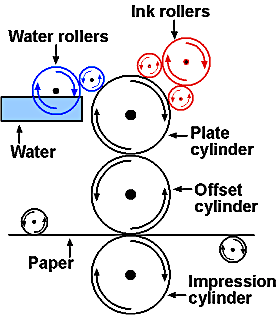 |
| Offset printing |
Today, computerized lithographic, now called offset, presses lay down ganged rows of ink onto a roller or a looped plastic belt that accumulates and transfers them onto a strand of paper rapidly moving by at the same rate. On some computerized presses one can even alter an image while it is being printed!
Whatever the details, the concept is the same, whether on a traditional plate or by its recent virtual counterpart, a computer algorithm. The print process gathers ink into an explicit configuration that a device, the printing press, holds, transports and eventually impresses onto some surface, usually paper.
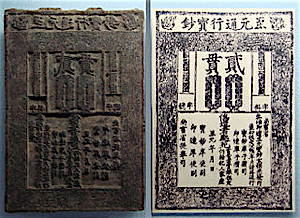 |
| Traditionally, a printed impression mirrors the plate configuration |
The faithful replication of image, of both text characters and pictures, one of many innovations of ancient Chinese culture, has been paramount among factors that enable the modern world. Wide-spread empirical science and mechanical technology are only possible through access to multitudes of dispersed identical copies of books and journals.
First, print media, and then electronic digital renderings, have carried precisely defined, described and determined ideas far and wide. They have made even global collaborative experiences of empirical science and technology possible. Archives of faithful copies of records and proposals transcend separations in space and time to promote common practices. ( William M. Ivins, Jr., Prints and Visual Communication)
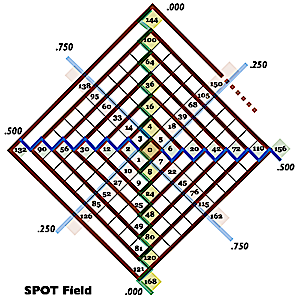 |
| SPOT number field rotated 45 degrees CCW |
Standing there by the litho press, I supposed that I could use a computer to make images. And, as it turned out, once defined, algorithms can both render and distribute them!
Already I was a Steemian, but didn’t yet know it. Later, after emergence of the Internet, I put together a website, SPOTops, to chronicle my explorations among these beckoning possibilities.
At first, working with the university mainframe, a DEC PDP 10, I developed a numeric field, the SPOT System, that I find more convenient than Cartesian coordinates, especially when typing positions of entities from a keyboard; currently I'm exploring utility of SPOT within a game. It will track movements and interrelationships of a virtual agent and other entities within a scenario. (Yes, I started out with timeshare computing, working through a teletype machine and punched cards, actually waiting a day or so just to see results of a programming change.)
Where rates of change accelerate, everyone gets pressed really hard
Networks of digital media already have fostered radical changes in human behaviors all around the globe. In the wake of the Altair 8800's debut, we have engaged a new paradigm for human interaction that, in terms of sociocultural evolution, I call C5. It incorporates compatible parts of the late "modern" C4 plateau that we now transcend. These successive transformations are gradual and cumulative, but their changes always bring disruption of the familiar. Cultural shifts affect everyone at local, regional, and national scales. And there yet will be far more rending dislocations of the familiar. Everywhere. For everyone.
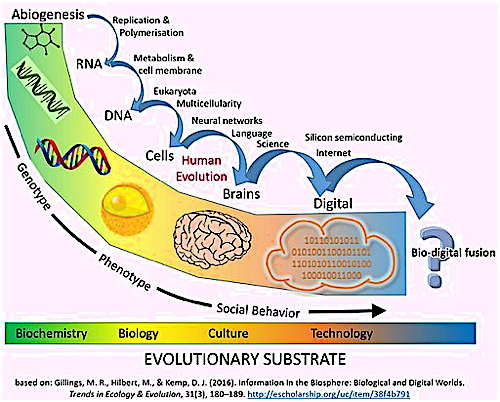 |
| Organic evolution |
Advent of each major technology has overturned old ways. Soon, the infamous technological Singularity, at C6, promises to be even more wrenching than any before. Whether we continue toward ever greater complexity of cultural development depends upon our finding ways to resolve anomalies in the rationales of our interactions — locally, nationally and globally.
Otherwise, as with many prior civilizations, we easily could fall back into earlier paradigms, with which we no longer are familiar. And the farther we fall from current levels of development, the simpler, the more primitive and the more brutal will be any scenarios of recovery.
Through a career in graphic art, repeatedly I have witnessed, in myself and in others, how cultural meanings originate and percolate up from individual moments of wayward attentiveness. (For other examples of my own image making, fiction writing, and so on, go to the Salon section of my SPOTops website.)
Social process can disseminate any person's discovery or innovation, however far their unique personal experiences may have wandered from the mainstream. Carl Jung points out that by definition, the new comes from the least expected places.
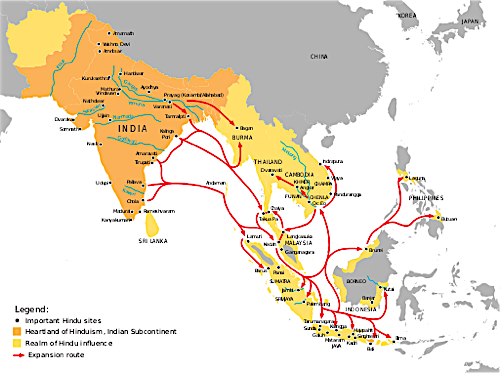 |
| Hinduism meme spreading in Asia |
Truly strange and novel ideas can rejuvenate a failing social culture. A peculiar notion may find other receptive minds; it can nestle in among their current patterns as a newly invigorating meme and successfully help make lives better.
Where possible, a timely idea "hitches a ride" across viable means of transport to reach other cognitive havens. It fosters responsive communication with others. That responsive feedback process is what makes societies organic. Feedback animates all of life. Lifeforms are the original cybernetic beings. Feedback enabled via computing now transmutes C4 rigidly-determined mechanical notions into a vividly sprouting C5 paradigm of organic resilience.
And so, Steemit now heralds a new era. If we can get through inevitably chaotic disruptions of the familiar, that is. Truly, that is a very large "if".
Where memes easily travel, there change the times
Some ideas happen too soon. Maybe a society is not ready. Or perhaps suitable technology does not yet exist for it to easily spread. Archimedes discovered the basics of calculus in the 3rd century BC, about two thousand years before Newton and Leibniz. But it did not find hospitable reception. The world was not ready.
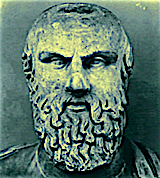 |  |  |
| Archimedes | Leibniz | Newton |
But when a new method or idea does prove timely, its implications can carry into any accessible context where it finds welcome, or at least tolerance.
Interacting with other ideas, new offspring memes multiply radially outward, across social links to inspirit still others. Eventually a meme may evolve and move such that it spreads far afield of its birth within someone's fruitful, uniquely personal, experience. So many really good inventions and discoveries are spawned as outcomes of someone's supposedly "useless" pastimes. (Ah, the stories I could tell of outright hostility toward an artist "invading and 'wasting mainframe computing resources' needed by more important calculations of molecular bonding or engineering stresses"!)
Any innovation that passes into general use further elaborates the menu of meanings availed in a culture. Each meme host, each person, along its way contributes to its trending prospect their own spin or improvement. Transmitted like a virus, a hot idea spreads and evolves in proportion to its general appeal and/or effectiveness. More useful and most relevant memes come to dominate and displace lesser ones. Slowly, they reset the communal sense of normal. Steemit is just such a global hotbed.
Those memes that organically strengthen and enhance social processes are of general benefit. They further articulate and enrich human circumstances. Others, like regressive atavisms, reduce or misallocate social wealth to diminish the commonweal.
Steemit offers a first coin and context for the next phase of organic evolution. Here, humans may negotiate a new virtualized order of realization.
Or, it may turn out that Steemit is but a high water mark. Our time may open onto a new Dark Age. Pseudo-tribal religious anxieties spur self-righteous barbarians to destroy any ethic of tolerance. So, down that road, in eventual aftermath of dissolution, evolution's brutal crucible must stir again, seeking options for a new start. From the beginning, more unites than divides us. We all are creatures of the same organic process, of the same cosmos.
Where the Steemit platform offers new hope to gathering Steemians
This is where I see the greatest benefit of Steemit: enhancement of the common good. Beyond its cryptocurrency and social platform lies an even more powerful idea: automated and equitable social governance.
The great mission of Steemit may be twofold:
- Its blockchain is able to anchor social governance for the good of all. Its automated incentives benefit everyone in direct proportion to their individual contributions.
- Positive feedback loops apportion community esteem among a diversity of creative pursuits, thereby fostering constructive exchange while duly punishing misbehaving rogues.
Steemit organizes and makes possible a new kind of virtualized society. It anticipates comprehensive automation of coherent government at any scale — perhaps via EOS.io or through some other massively scalable network? Through Steemit, individuals constructively feed and enhance evolving sociocultural dimensions of attentiveness.
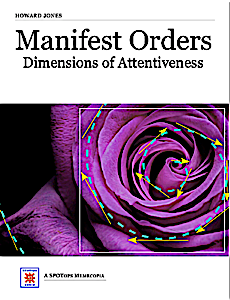 |
| Manifest Orders coverpage |
Currently I am building a multimedia project in a form I call memecopia, which means "many ideas" gathered into a browsable hypertext.
Manifest Orders: Dimensions of Attentiveness [MO] is a work-in-progress. It examines creative patterns of evolving human behaviors first seen in childhood development and ultimately "fractally mirrored" across cultural evolution of our branch of primates.
Analogs of those cognitive schemas carry over into sociocultural patterns of methods and artifacts. As memes they tentatively consolidate into stable paradigms that may dominate people's social lives for centuries. According to Oswald Spengler and Amaury de Riencourt, modern European/American culture began about 1,000 years ago. Steemit debuts a platform whereupon the seed of the next cultural era can take root and flourish — if it proves timely. That depends not only upon the state of global affairs, but upon the vigor of Steemians, as well.
The first four chapters of MO constitute a Prelude. Twenty more installments are planned to examine particulars that relate to each attentive dimension, along with a look at those cultural orders that seem most directly relevant. MO is available, in progress, without charge, under Creative Commons CC-BY-NC-ND license.
A note from this artist to cognitive scientists: To fathom consciousness, consider the orders of attentiveness. Beyond M0 sentience itself, I count ten. They act as focal "fingers of the mind": The lower five, M1..M5, work with the actual; the other five, M6..M10, the virtual. But who knows what fabulous new cognitive prosthetics may be devised at C6?
Where we may collaborate
Steemit seems to be an ideal venue in which to engage and share experiences that aspire to global relevance. But this is a very large endeavor, in an immense cosmos. I am but a very small speck. I trust that other interested minds from all regions of the world will contribute. I welcome comments, critiques and suggested improvements. My own renderings, at best, are but tentative proposals, anchored in a single person's experience. After all, steem spelled backwards is meets. I want to meet diverse opinions, to further avenues toward mutual understanding, and to help rejuvenate lapsed and ailing memes.
Where I yell, Look, Ma, I'm a Steemian!
 |
| Howard Jones, aka johojo |
Greeting howard, give you an upvote as i know you will be a very great member of steemit in short time. J have been working in banks only see the inefficiency, not innovative that demoticate every single day until i find steemit. And it is definitely a great thing coming from technology!
Thanks for the encouragement. I look forward to hearing from you and others, pro or con, about the project Manifest Orders, discussed in my post . And I look forward to engaging with the Steemit community at large, and especially with those with expertise in world cultures and institutions. I imagine that your banking experience is very germane to world affairs and I hope we may all benefit from your knowledge.
Welcome to Steem @johojo I have sent you a tip
bottymcbotface, thanks. But as a newbie at first I didn't know what you meant by "sent me a tip". But now I see you actually did tip me. Thanks! It's my first. I'll definitely "remember you when I'm rich" LOL
Welcome to the platform, I wish everything work out for you. It’s not easy here but not difficult neither but just ask an extra effort, engagement is the key good luck I’m @goodaytraders Start by following people and they will do the same.
Welcome to steemit community. You will love it. Following links may help you to get started.
New Users Guide: https://steemit.com/welcome
Dos and don’ts on Steemit:https://steemit.com/steemit/@najoh/dos-and-don-ts-on-steemit
Top Earners List:https://steemwhales.com/
ChainBB Steem Forum: https://steemit.com/chainbb/@jesta/chainbbcom-a-blockchain-forum-platform-for-steem
If you find this post useful, Feel Free to up vote, follow me.
Thanks, maheshreddy, I found several very useful tips among the guides you suggested. As a newbie I have so much to learn.
Wow, tbh it's an overwhelming amount of content, especially for an introducement. Haven't had time to read all of it yet, but u do have great writing skills! And u seem to have lived quite some life so far. There are a lot of open minded people on this platform and you seem to fit right in, GL!
Thanks so much for commenting @droucil. I really enjoyed reading your post and look forward to many exchanges with you and others about themes we all find so arresting. You're right, this is a lot of text, especially just to introduce myself. But you should have seen the initial 7,000 words I had to pare down! I needed to introduce my project Manifest Orders as much as put myself forward. The two threads are intimately intertwined. But Manifest Orders is really why I'm here. Anyhow, I do plan to reduce the length of future postings. I hope to be guided by other people's interests as much as my own. So, I hope you'll feel free to comment and make suggestions once you've had time to look the content over. Thanks again.
Great 👌
Welcome to steemit! Good posting!
See you later again.
Welcome to this new wave of social media. It may well change the world
Welcome on Steemit \☺/
Hi...
I am here now, I have seen and read it, a good post and can be motivate other steemians. A great job, may you succeed with you.
Friendship greetings from me @joe28
Vote and follow done.
Waiting for your arrival.
Thanks, joe28, your encouragement is quite gratifying. I both upvote and follow you.